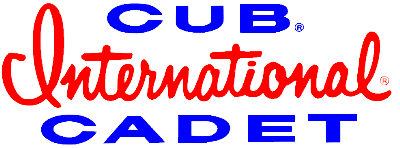mgonitzke
Well-known member
I've been wanting to do this mod to my 782D for awhile. My Dad was using it to bag grass this spring, and a stick or something went through the hydro fan and took out all of the blades. This tractor had the disconnect clutch option, which uses a different fan, and the fan was nearly $100 from most sources I was able to find. The OEM driveshaft components don't last particularly long in the diesel models, and I've already been into this a couple times on this tractor in ~60 hours. Driveshaft servicing is not easy or fun, either. Tractor has to be taken really far apart, or leave it together with patience and busted knuckles.

Solution:
Shortened 2000/3000 series driveshaft, pictured below in its original form.
This same driveshaft, presumably in a variety of lengths, was used in all 2000 and 3000 series tractors. To my knowledge, all of them are long enough to be shortened and used in any older machine with about any engine, including a super garden tractor with a V-twin transplant, which requires a fairly long driveshaft. It is a fairly simple design. The driveshaft itself is a heavy-wall tube with a fitting pressed over and welded to either end, and a ring on both ends. Eight polymer barrels connect the ring to the shaft and allow for some misalignment. The replacement barrel kits are fairly inexpensive (~$18 per kit, two required) and are the only wear parts, within reason. The bolt circle on the rings is the same as the existing Kohler flywheel end driveshaft couplers used on Cub Cadet garden tractors, and also the same as the CV joint driveshaft used in the "cyclops" models.

This guy makes engine and transmission couplers for a variety of Cub Cadet models that make this a nearly drop-in modification. I bought the Kubota engine coupler and "plain" hydro input shaft coupler from him.

All that's required to shorten the driveshaft is to cut off the welded-on end piece through the original weld on one end, grind off the weld on the end piece, punch out the short piece of driveshaft tube, shorten the driveshaft to the required length (I cut mine such that the assembled driveshaft was between 1/32" and 1/16" short to allow for thermal expansion of the engine and transmission), and then re-weld the end piece. I'm not sure it was necessary, but I made sure that the drive barrels were clocked the same on both ends when I welded the end back onto the shaft. Installation is much easier than the original shaft.


Time will tell how long it lasts. I have the same driveshaft in my 1872 with Kohler Command V-twin, and have about 40 hours on that so far. The donor tractor for that one had over 700 hours and had very little wear on any of the parts, except the drive barrels. In my opinion, this is a better design than the CV joint driveshaft I have seen a lot of people use. The CV joint driveshaft is overly complex for what it does, must be re-greased periodically, and all of the individual parts are expensive. Shortening or lengthening the CV joint driveshafts is also not easy to do well.

Solution:
Shortened 2000/3000 series driveshaft, pictured below in its original form.
This same driveshaft, presumably in a variety of lengths, was used in all 2000 and 3000 series tractors. To my knowledge, all of them are long enough to be shortened and used in any older machine with about any engine, including a super garden tractor with a V-twin transplant, which requires a fairly long driveshaft. It is a fairly simple design. The driveshaft itself is a heavy-wall tube with a fitting pressed over and welded to either end, and a ring on both ends. Eight polymer barrels connect the ring to the shaft and allow for some misalignment. The replacement barrel kits are fairly inexpensive (~$18 per kit, two required) and are the only wear parts, within reason. The bolt circle on the rings is the same as the existing Kohler flywheel end driveshaft couplers used on Cub Cadet garden tractors, and also the same as the CV joint driveshaft used in the "cyclops" models.

This guy makes engine and transmission couplers for a variety of Cub Cadet models that make this a nearly drop-in modification. I bought the Kubota engine coupler and "plain" hydro input shaft coupler from him.

All that's required to shorten the driveshaft is to cut off the welded-on end piece through the original weld on one end, grind off the weld on the end piece, punch out the short piece of driveshaft tube, shorten the driveshaft to the required length (I cut mine such that the assembled driveshaft was between 1/32" and 1/16" short to allow for thermal expansion of the engine and transmission), and then re-weld the end piece. I'm not sure it was necessary, but I made sure that the drive barrels were clocked the same on both ends when I welded the end back onto the shaft. Installation is much easier than the original shaft.


Time will tell how long it lasts. I have the same driveshaft in my 1872 with Kohler Command V-twin, and have about 40 hours on that so far. The donor tractor for that one had over 700 hours and had very little wear on any of the parts, except the drive barrels. In my opinion, this is a better design than the CV joint driveshaft I have seen a lot of people use. The CV joint driveshaft is overly complex for what it does, must be re-greased periodically, and all of the individual parts are expensive. Shortening or lengthening the CV joint driveshafts is also not easy to do well.








